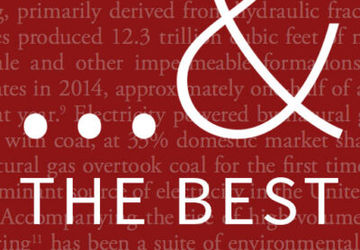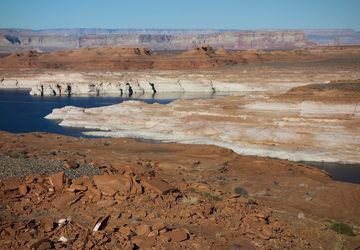Elisabeth Westermann on a hike at the Grand Canyon of the Yellowstone.
Elisabeth Westermann (she/her)
Hometown: Menlo Park, CA
Major: History ‘26
Internship: Yellowstone National Park Heritage and Research Center
Elisabeth Westermann reflects on her research and work as a museum intern at Yellowstone's Heritage and Research Center
I opened a box in the Yellowstone archives and discovered treasures: handwritten diary entries, letters, leather-bound photo albums from the 1920s, an annotated book manuscript. This box contained some of the personal papers and items of Herma Albertson Baggley, Yellowstone’s first permanent female naturalist.
After earning a botany degree, Baggley began working in Yellowstone in 1926 as a maid to earn room and board and lectured to visitors in the afternoon. She was asked to return the following summer as a full-time seasonal naturalist and eventually earned a permanent position in 1931. In the archives, I found a manuscript where she had written, “I have never been more thrilled over a position and think I never shall be. It was the one thing I had dreamed and struggled to attain.” Baggley sustained a lifelong devotion to Yellowstone and its plant life, compiling and writing the first edition of an encyclopedia of Plants of Yellowstone National Park, an invaluable resource to visitors and researchers alike, and a second significantly updated edition in 1956. Hers is one of the many stories I have investigated as a museum intern at Yellowstone National Park’s Heritage and Research Center.
One of my main projects this summer is designing an exhibit on the pioneering, and often overlooked, women who contributed to the park’s history. The exhibit will use photographs, objects, and documents from the museum collections and archives to tell the story of early female rangers and naturalists, entrepreneurs, and artists. It has been an incredible experience over the past few weeks to research in and get to know Yellowstone’s library and archives. In the second half of my internship, I am looking forward to diving into the museum collections and building case-design skills as I work to bring this project into reality.
Researching Baggley and her contemporaries has given me insight into how historians use a mosaic of sources to construct biographies. It has been exciting to discover and utilize new types of sources and in turn, think about how to tell stories visually rather than in the narrative form I am more used to from academic work. I have also been inspired by the stories I’ve discovered, of women who forged lives for themselves either in the Park Service or through independent businesses in a time when there were few precedents and in an environment that was frequently openly hostile to women (the Park Service effectively moved to stop hiring female rangers in 1926, for example) and physically inhospitable (temperatures in Yellowstone can reach lower than 50 degrees below zero in the winter). At the same time, it has been moving to read accounts of early park employees’ devotion to the park and their work there. I am excited to share these findings in a way that is engaging for members of the public.
When I am not working on the exhibit, I have been assisting with day-to-day museum work as well as several ongoing conservation projects. One of my favorite jobs is giving the weekly public tour of the museum collections and sharing our work and a range of incredible objects, from Thomas Moran paintings to fossils, with enthusiastic visitors. In early July, two expert paper conservators visited the Heritage Center and taught the staff how to mend historic paper. We have been using the skills we learned in this workshop to repair heavily damaged blueprints of early Yellowstone buildings so that they can be safely handled by researchers. Another ongoing project has been cleaning the museum’s historic vehicle collection, which includes wagons, stagecoaches, and the iconic yellow tour buses that began roaming Yellowstone in the 1920s.
Spending the last five weeks working on preserving the history of this incredible place and sharing it with members of the public has been a meaningful and deeply valuable introduction to the field of public history, and has solidified my interest in continuing to work in this area. When I am not working, I have been exploring the park through hikes and drives and developing a sense of the magic and wonder of the park’s ecosystem and landscape that has touched visitors and employees alike through the years. I already know it will be hard to leave.



